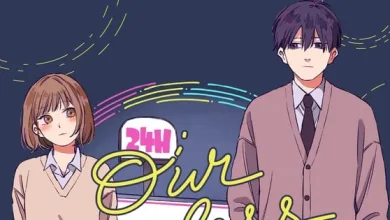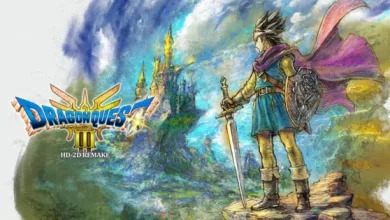Girls Band Cry Anime Series Review – Review

Looking at the credits, the most immediate connection to Girls Band Cry is the Love Live! franchise. Lead writer Jukki Hanada filled the same role for three of that franchise’s four major anime projects and director Kazuo Sakai has already teamed with Hanada before on Love Live! Sunshine!!. The show’s broad strokes—a group of girls forming a musical project and capping off their emotional journeys with in-universe musical performances—are right in line with the world of school idols. However, those similarities pale once one watches even a single episode, as GBC immediately establishes itself as a different beast.
A lot of that comes down to tone and setting. The ladies of Love Live! go through their struggles but they ultimately embrace a near-supernatural positivity in their stories. GBC is immediately more grounded, a good bit more cynical, and much closer to what starting a band in your late teens might look like. Its characters are a mix of high-school dropouts and 20-something musicians working part-time jobs to keep the lights on while self-funding the band. They play small-time gigs in whatever music venue will spare them the time of day. There’s a minor plot point involving music copyright, where Momoka signed away the rights to her original songs after leaving her previous band, and now has to watch them flourish off the success of her work. GBC wants to explore the realities of being a professional musician and the constant friction between making art and making money.
Similarly, the character drama is fueled by angst and optimism constantly being at odds. Nina and Momoka’s dueling character arcs take up much of this season’s drama, constantly clashing and arguing in the ways only supremely passionate bandmates can. Nina is fueled by a need to prove that she was right about moving out on her own and taking the difficult path—showing that preserving her sense of justice was better than compromising with the bullies and adults who failed her. Momoka finds herself pulled into her angry apprentice’s energy, yet can’t escape the guilt of her own past choices—personally familiar as she is with the biting sting of failure that can come with standing by one’s convictions in the cutthroat entertainment world. They pull each other closer while simultaneously pushing each other away. As Nina urges Momoka to embrace her anger at the wrongs she’s faced, Momoka tries to shield them both from the indifferent and uncompromising music industry.
That might make the show sound like relentless drama but the real key to GBC‘s charm is how it mixes all that angst with whip-smart humor. There’s a smorgasbord of physical comedy to be had in any and every episode, from Nina attacking a passerby with a lamp, to bassist Rupa catching a beer can thrown at her head and cheerfully chugging it in seconds. Drummer and actress Subaru provides a seemingly infinite number of weird, silly, and altogether wonderful faces—enhanced by about half of them being bitingly sarcastic. Nina and Momoka get into shouting matches every other episode—and the choice to have these happen in populated restaurants adds the perfect level of awkward absurdity as countless strangers witness these two girls tossing drinks and making dramatic declarations while their bandmates groan in embarrassment or try to sneak out of frame. There is so much Grade-A slapstick in this show that perfectly complements its heavy drama.
On the topic of slapstick, the show’s approach to 3D animation is a bit of an acquired taste—but one that works perfectly for its dramatic, comedic, and musical aims. The characters are infinitely expressive and move with boundless energy. However, they are also equally capable of small, subtle acting choices that are rare even for more well-known CG productions from Studio Orange or SANZIGEN. The biggest criticism of TV-level CG anime is how stiff and uncanny it can feel compared to traditional 2D but Girls Band Cry is buoyant, emphatic, and altogether fantastic when it comes to character animation. There are some drawbacks—the background and environments are often awash with monochromatic color or light filters to make the compositing more believable but this in turn wash out the frame. Momoka’s unnaturally smooth cat is the most visible rough edge—and most background characters aren’t much better. Yet on the whole, Sakai’s direction makes it all click to where you can completely forget you’re watching a 3D series—until the camera does something frenetic that no 2D production could manage. Along with a strong, rock-driven score, GBC can effortlessly flit between comedy, drama, tragedy, and every other emotion you’d expect from the lives of amateur musicians.
Where the show’s aesthetic truly shines is in its musical performances. While there’s not a new song for each episode, the band’s performances are frequent and almost always operate as spectacular punctuation to the characters’ current conflict—presented with the flair of a full-on musical. Togenashi Togeari‘s music is full of the same angst and rebelliousness as its members, gracefully articulating the characters’ pain and loneliness while stubbornly standing in defiance of it all. That energy is matched perfectly with the polished, modern rock production that borrows from both typical J-Rock and more indie, online music scenes—especially when it comes to the direction of these performances. There’s a very good reason why the show’s official YouTube account hosts all these songs as individual music videos—even out of context they’re exciting, dynamic displays. In context, they’re some of the most dramatically satisfying moments in anime you’re liable to see all year. They’re great spectacles deployed with laser precision to have you cheering and crying—probably both at once.
As viscerally and emotionally satisfying as the show is, there are noticeable loose ends after the final credits roll. Nina and her story are excellent—portraying the emotions of a young woman who’s as lovable as she is insufferable. She’s a gnarled ball of pent-up emotions that make her perfect as a rock vocalist but also an enormous (and entertaining) pain in the ass that only gradually grows out of her worst instincts. Her story is well-realized and layered, but by the creators’ admission, it takes so much time that the rest of the cast is left with scraps. Momoka is served well as she’s integral to Nina’s story but everyone else gets at most one episode to develop their story before falling by the wayside—and Rupa doesn’t even get that much. Similarly, there’s a ton left unsaid about the group’s rivals Diamond Dust—especially Hina, the former friend with who Nina had a complicated falling out. There are a lot of stories left to be told but no room for them by the last episode. Maybe that’s a good problem—a sign that the show’s characterization is strong enough to demand more. But without an announcement for a continuation at the time of writing, it feels more like lost potential than anything else.
There’s also the issue of how to watch it. At the time of writing, Girls Band Cry is not legally available through any English-language streaming service. The only way to get it in North America is through digital purchases via a handful of online storefronts—primarily Amazon Prime and the Microsoft Store—for somewhere between $8-10 USD for the entire season. While that’s not a huge expense in comparison to, say, a month of a more standard streaming service, it’s still an unnecessary barrier to entry. One must imagine this belabored, half-measure attempt at an international roll-out makes sense to somebody at Toei. Still, it’s a strange sight for the average anime viewer.
That said, the show is ultimately worth the cost—or worth getting a library card to check out individual episodes through Hoopla. No matter if you’re a devotee to the burgeoning “Girls Band” sub-genre or just somebody who loves music in general, Girls Band Cry is an emotionally exhilarating show with a fantastic cast, uniquely strong animation, and fist-pumping songs. Missing out on it means missing out on one of the best anime of the year.
Source link
#Girls #Band #Cry #Anime #Series #Review #Review


